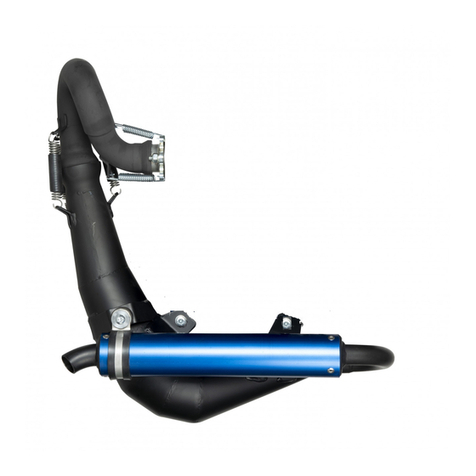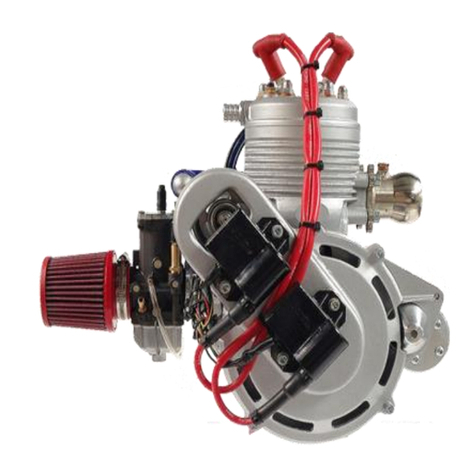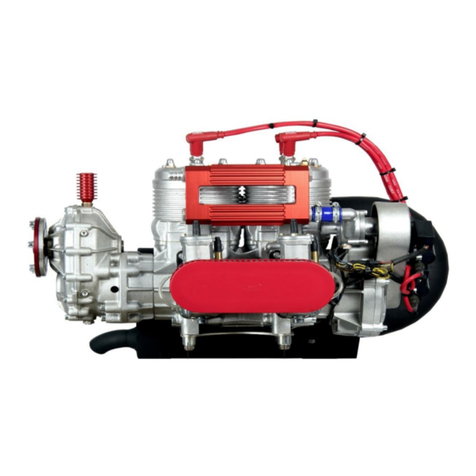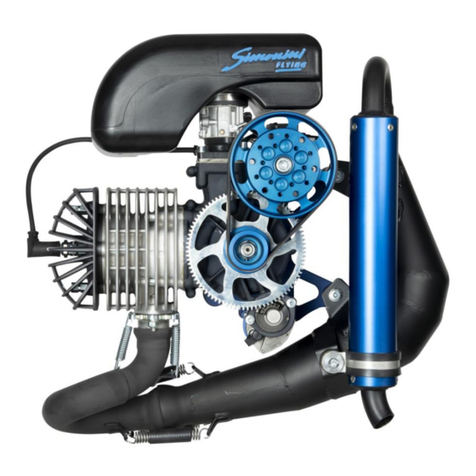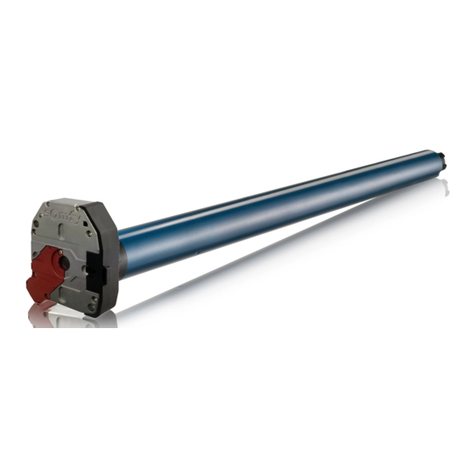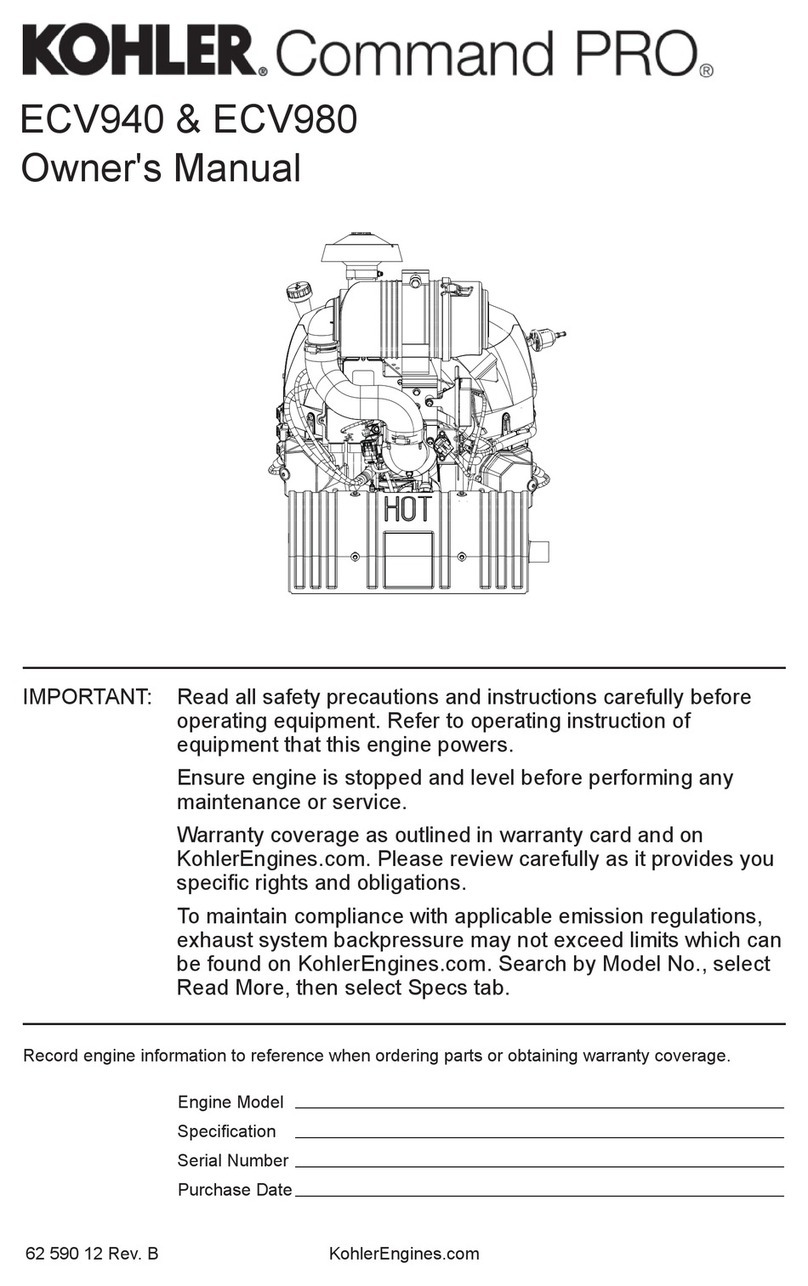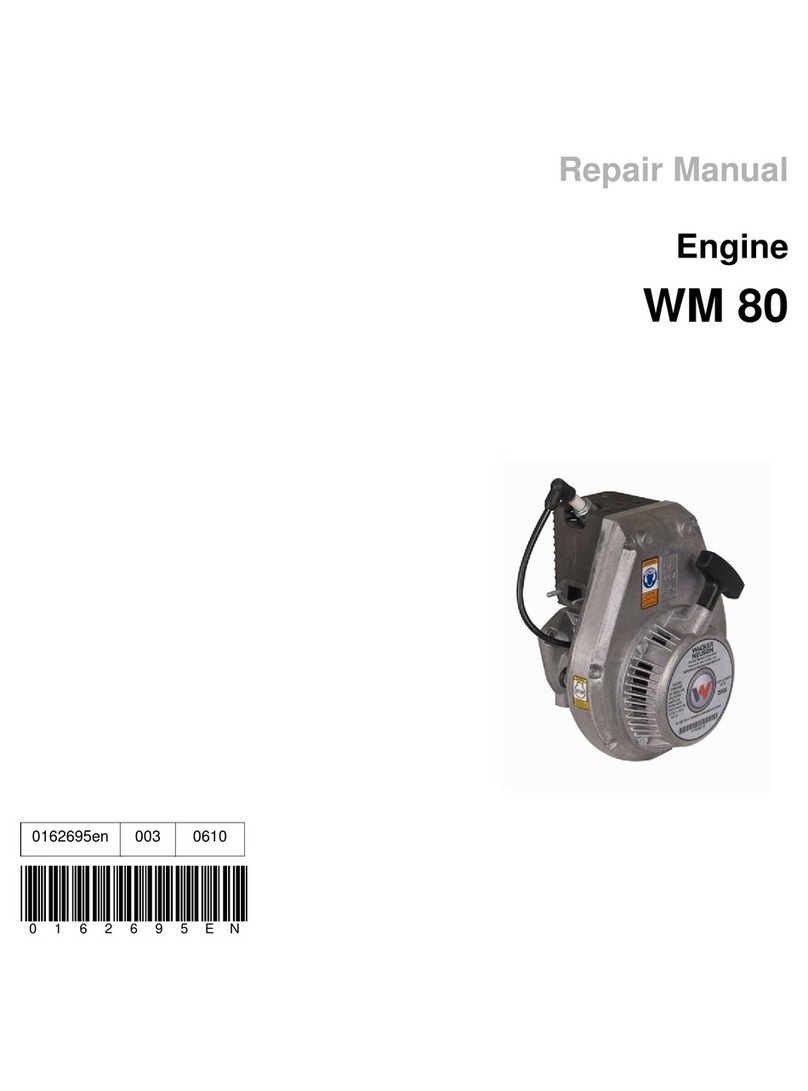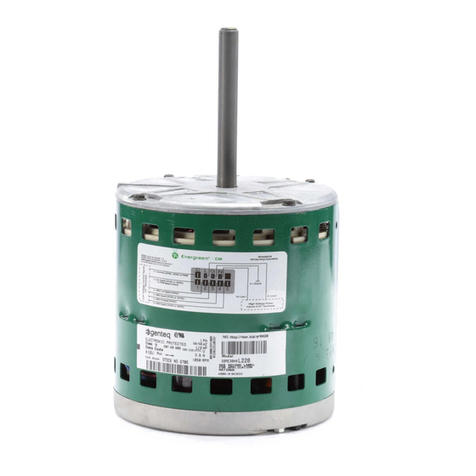SIMONINI MINI 2 User manual

Page 1
MINI 2

Page 2
TECHNICAL DATA
BORE 66,4mm
STROKE 58mm
DISPLACEMENT 202 cc
COMPRESSIONRATIO 10,5/1
Weight ready to fly 18,300 kg
CONSUMPTION AT5000RPM 2,5litres/hour
POWER7500RPM 26hp
STATIC THRUST Over 80Kg
Lamellar intake with Walbro Carburetor WB37
Aluminum cylinder with ceramic coating magnesium,
Exhaust resonance
Poly-V belt reduction
Electronic ignition
Electric starter
Alternator battery charger in flight
Lubrication premix: 2.5% with premium-gradegasoline
3.0% with unleaded fuel
REDUCTIONRATIO AVAIABLE
1:226 Crown gear 129 mm / Pinion 57mm
1:230 Crown gear 129 mm/ Pinion 56 mm
1:234 Crown gear 129 mm / Pinion 55 mm
1:242 Crown gear 129 mm / Pinion 53 mm
1:3 Crown gear 138 mm / Pinion 44 mm

Page 3

Page 4

Page 5
MINI2PLUS/01
RECTIFIER RE-CHARGE BATTERY
MINI2PLUS/36
BEARINGS SPACER
MINI2PLUS/02
COIL
MINI2PLUS/37
PULLEY SEEGER
MINI2PLUS/03
KIT SCREWS FOR HEAD (4)
MINI2PLUS/38
ECCENTRIC PINION
MINI2PLUS/04
CYLINDER HEAD
MINI2PLUS/40
KIT SEALS ( 2 )
MINI2PLUS/05
CYLINDER HEAD GASKET
MINI2PLUS/41
KIT BEARINGS FOR CRANKCASE ( 2 )
MINI2PLUS/06
KIT SCREWS FOR CYLINDER (4)
OLD TYPE 4304-6304/C3 - NEW 4205-6205/C3
MINI2PLUS/07
CYLINDER
MINI2PLUS/42
COMPLETE CRANKSHAFT AND ROD
MINI2PLUS/08
CYLINDER GASKET
MINI2PLUS/45 A
COMPLETE CONNECTING ROD (new type 22mm)
MINI2PLUS/09
KIT SILENT-BLOCKS (4)
MINI2PLUS/46
COMPLETE PISTON AND RINGS
MINI2PLUS/10
CRANK CASE
MINI2PLUS/46 A
TWO RINGS
MINI2PLUS/11
KIT ENGINE SCREWS
MINI2PLUS/46B
PISTON PIN
MINI2PLUS/12
WASHER-PRESSURE OUTLET
MINI2PLUS/46C
SET PISTON CIRC CLIP
MINI2PLUS/15
AIR FILTER
MINI2PLUS/47
STATOR
MINI2PLUS/17
CARBURETTOR WALBRO WB 37
MINI2PLUS/49
FLY- WHEEL
MINI2PLUS/17 A
ALUMINIUM MANIFOLD
MINI2PLUS/50
ALUMINIUM PLATE FOR STATOR
MINI2PLUS/17B
PLASTIC MANIFOLD
MINI2PLUS/51
LITTLE PINION FOR REDUCTION
MINI2PLUS/17C
PAPER GASKET FOR CARBURETOR
MINI2PLUS/52
SPARK PLUG BR 10 ES
MINI2PLUS/17D
ALUM. MANIFOLD FOR AIR FILTER
MINI2PLUS/53
ALUMINIUM PLATE FOR COIL
MINI2PLUS/20
CARBURETTOR RUBBER MANIFOLD
MINI2PLUS/54
EXHAUST SYSTEM
MINI2PLUS/21
REED VALVE
MINI2PLUS/54 A
EXHAUST BEND
MINI2PLUS/22
REED VALVE GASKET
MINI2PLUS/54B
SILENCER
MINI2PLUS/23 SIL
ELECTRIC STARTER SILVER
MINI2PLUS/54C
INOX/SILICON CLAMP
MINI2PLUS/23GOL
ELECTRIC STARTER GOLD
MINI2PLUS/54D
EXHAUST CHAMBER
MINI2PLUS/26 SIL
CROWN GEAR SILVER
MINI2PLUS/55
ALUMINIUM PLATE FOR SILENT-BLOCK
MINI2PLUS/26GOL
CROWN GEAR GOLD
MINI2PLUS/58
RUBBER FOR SPARK PLUG
MINI2PLUS/27
WASHER FOR PINION
MINI2PLUS/59
CONNECTING ROD CAGE
MINI2PLUS/28
NUT FOR PINION AND FLY-WHEEL
MINI2PLUS/60
EXHAUST GASKET
MINI2PLUS/29
POLY- V BELT
MINI2PLUS/61
COMPLETE GASKET KIT
MINI2PLUS/30
ALUM. PLATE FOR PROP. +SCREWS
MINI2PLUS/62
EXHAUST MANIFOLD AND SPRINGS
MINI2PLUS/32
SCREW FOR BIG PULLEY
MINI2PLUS/63
KIT MEMBRANE WALBRO WB32/37
MINI2PLUS/33
BIG PULLEY
MINI2PLUS/64
LITTLE WHITE MEMBRANE WB32/37
MINI2PLUS/33 A
BIG PULLEY for 1:3
MINI2PLUS/65
REED VALVE PETAL
MINI2PLUS/34
PULLEY SPACER
TIGHTENING TORQUES
Description
Special number in table
NM
Kgf.m
Head Nut
3
22
2.2
6x40 Screws
11
12
1.2
Connector
12
10
1.0
6x30 Screws
18
12
1.2
6x25 Screws
25
10
1.0
12 Nuts
28
54
5.4
12x30 Screws
32
60
6.0
8x40
39
24
2.4
Spark Plug
52
18
1.8

Page 6
The MINI 2 PLUS engine mustbe fitted to the frame using its four elastic supports
"silent blocks", radialmounted: two are positioned on the head and two on the blue
ergal plate.
During the installation, somesafety precautions must be made: remember that an
engine generates vibrations, even if very few, whichcan cause the loosening and/or
removalof screws or any other object. Therefore, to prevent any engine
components may cause damage to persons and/or property, makesurethe engine
through a small steel cable. Components normally "made safe" are:
• The filter and the carburetor to the engine
• The springs and exhaust to the engine
• The engine itself to the frame, bypassing the silent blocks. In this case we will use
the "webbing" of synthetic fiber is particularly resistantto traction and tearing.
The spherical mouth of the muffler should be lubricated with greaseresistantto
high temperatures (e.g. copper grease) before being implanted in the exhaust
manifold.
We recommend taking maximum carewhen carrying out these operations: in any
case, during the assembly phase the proper choices must be made by expert and
qualified personnel.

Page 7
FUEL
The MINI 2 PLUS engine is designed to operate with a gasoline/oil mixture.
We recommend using a semi-synthetic oil (for example, BARDAHL with API TC
specification) that, although inferior to a pure synthetic, remains mixed with
gasoline in the tank for a longer period. Itgrants good lubrication and longer life to
engine components.
During the running-in stage, use an oil percentage of 3,5% and then move to 3%
once the stagehas been completed.
The gasoline must havean octane number not lower than 95, in order to avoid pre-
ignition phenomena.
Carefully mix the fuel oil in a tank is appropriateand it is better, once mixed, to use
it within one week. Do not use vegetable or animal oil.
DO NOT MIX DIFFERENT TYPES OF OIL. We do never recommend using CastrolTTS
Oil. None guarantees by using this oil will be applied.
CARBURETOR
The carburetor Walbro WB37, if used properly, provides excellent performance
requiring few tuning interventions. However, changes in weather conditions,
altitude and a possiblechange of the propeller (both in size and in pitch) can affect
its functioning.
The carburetor is adjusted during the testing phase with a standard setting
• Screw H "affects the entire range of use of the engine”. From completely
tightened, loosen by 1 + ¼ turn or 450°.
• Screw L “only has as effect at a low engine speed”. From completely tightened,
loosen by ¾ turn or "270 °".
Since the first test is performed at an altitude of 600 m above sea level, you may
need to depart from this setting without the adjustments exceed the limit:
• screw-H do not fall below a round "360 °"
• Screw L do not fall below ½ turn "180 °"
The carburetor is equipped with a depression pump to remove fuel from the tank,
but do not exceed the height difference between them as it has not exceed to 50-
60cm. The same applies to the tube: do not exceed 50-60cm.

Page 8
CARBURATION
NB: in this paragraph the words "MIXTURE" indicates the union of the two elements (AIR) +
(OIL/GASOLINE) which takes place inside the carburetor.
Weather conditions or altitude changes have influence to the operation of the
engine as it varies the air density and, consequently, changes the mix ratio between
the element AIR and the element OIL /GASOLINE.
In general, wecan state that at high altitude, high humidity or high temperatures,
less air enters and therefore the mixture is richer in oil/gasoline: you will have to re-
establish the proper relationship by screwingthe two screws "H/L”.
In contrast, with low temperatures and low humidity, the air will become denser so
a lean carburetion requires you to unscrew thetwo screws "H / L".
WARNING: A mixture that is too low in oil/gasoline causes considerabledamage to
the engine that can cause a break down and/or stop it suddenly. Itis recommended
to carry out the carburetion operations with the ENGINE SWITCHED OFF.
When the "H / L" screws aretightened/loosened, carry outvariations of 1/8 of a
turn each time or "45°", larger movements in a turn can cause engine damage.
RUNNING-IN
WARNING
• Before starting the engine, make sure that there are no loosened screws or
improperly attached parts;
• Ensure that any person is at a distance of absolute safety and never in the rangeof
the propeller;
• Do not start the engine where there are rocks or any objects that the force
generated by the propeller can lift and throw even at a considerable distance;
• Do not start the engine without the propeller nor the exhaust;
• Do not start the engine indoors: the exhaust gases contain poisonous carbon
monoxide which aretoxic and can cause loss of consciousness and death.
The engine, beforebeing sold, is subjected to a pre-running-in to verify the proper

Page 9
operation and a test that confirms all the features advertised.
Once you order a MINI 2 PLUS, you should pay particular attention to the first hour
of operation, in order to ensure all the engine’s qualities over time.
DURING THE RUNNING-IN PHASE, KEEP PARTICULAR ATTENTION TO THE EXHAUST GAS
TEMPERATURE AND HEAD TEMPERATURE UNDER CONTINUOUS OBSERVATION.
Havingselected a suitable place and above all free from gravelor other materials
that may damage the movingparts, start the engine and let it warm up for 10
minutes at 2500 rpm, then slowly bring the engine to a system more high,
decreasing and increasing the speed at intervals of 1 minute, thus going to affect
various "range" of use, but without exceeding 4500 rpm. Absolutely avoid the
constantand repeated closing/opening the gas valve. After about 20 minutes from
start-up, shut down the engine and let cool completely.
WARNING! Whenthe engine is runningand even after its shutdown, it can cause
burns: so make sure it is completely cooled before working on it.
Proceed with a thorough visualinspection of any anomalies or loose parts. Once you
make sure everything is workingproperly and there are no problems of any kind,
you must repeat the previous operation for another 20 minutes of running,
respecting the same indications.
Last running-inphase:warm up the engine again for 10 minutes at 2500RPM and
then, as in the two previous operations, gradually increasing the RPM. Now you can
wander over the entire rangeof useof the engine, bringing it severaltimes to the
maximum speed at intervals of 1 minute.
After 20 minutes you can turn off the engine and, once cooled, you will proceed to a
full-tightening the screws on the MINI 2PLUS. Now the engine MINI 2 PLUS will be
ready for usefor which it was designed by continuing to usea percentage of oil by
2,5% for the next 10 hours.
WARNING! DURING THE RUNNING-IN PHASE, KEEP PARTICULAR ATTENTION TO THE EXHAUST GAS
TEMPERATURE AND HEAD TEMPERATURE UNDER CONTINUOUS OBSERVATION.

Page 10
MAINTENANCE
Each time you use the engine, remember to perform routine checks pre-start-up:
• Check the silent block condition in complete integrity
• Make sure the exhaust does not present any cracks
• Ensure that the propeller does not present cracks or dents
• Make sure you have enough fuel, according to the duration of intended use of the
engine.
• Check that the electrical system and cables do not show abrasions or disruption.
• Check that there are no screws or parts loosened.
BELT TENSION
WARNING:CARRY OUT THE OPERATIONS WITH THE ENGINE SWITCHED OFF AND COOLED DOWN
During operation, the belt is under strain and wear and as result, lengthening
occurs, which could lead to sliding on the pulleys, with a subsequentdecreasein the
general engine performance.
To restorethe proper tension, loosen the screw M8 on the foot of the engine which
fastens the pulley can, turn screw M8 (n°32) anti-clock wise using forceof 1.8 Kgm
and then re-tighten screw M8.
INTERVENTIONS EVERY 20 HOURS
• Clean filter carburetor
• Clean fuel filter
• Check the belt tension and condition
• Lubricate the ball joint of the muffler
INTERVENTIONS EVERY 60 HOURS
• Replace the engine and exhaust silent blocks
• Replace the transmission belt
• Check the status of the intake manifold rubber
• Replace the exhaust pipe sound-absorbentmaterial
• Check the electrode gap spark-plug: if it is over 0.6 mm, change the spark plug
• Rubber components such as belt transmission, silent block, intake manifold and

Page 11
depression tube may be damaged by atmosphericagents. Their durability can
therefore be different from what is reported, you should therefore check their
condition and providea possiblereplacement even outside the agreed time.
INTERVENTIONS EVERY 200 HOURS
• Replace all the bearings (N°41 + N°35)
• Replace all oil seals (N°40)
• Check the internal parts of the engine and carry out their replacement in case
the height limit confirm it is necessary.
•Cylinder:
-must not show signs of seizure or scratches on the filling material (nickel
silicon);
-check the wear of the cylinder in the four points (shown in diagram 1) on X
and Y axles, none of the heights obtained must exceed the height limits:
SELECTIONA: 66.430mm
SELECTIONB: 66.440mm
SELECTIONC: 66.450mm
SELECTION D: 66.460mm
The selection reference is stamped on the bottom of the cylinder

Page 12
• piston:
-There must not be any signs of seizureor deep cracks.
-Check the wear by measuring the piston at 18.5mm from thebottom keeping
the measuring instrumentat right angles to the axis pin.
Height limits:
SELECTION A: 66.290mm
SELECTION B: 66.300mm
SELECTION C: 66.310mm
SELECTION D: 66.320mm
• The pin must not be blue because that indicates a high working temperature and
the external diameter must not be less than 15.990mm.
• Measure the slack between the piston ring and its seat: slack height limit 0.8mm.
• Piston ring: insert a piston ring in the cylinder one by one, by using the piston, so it
is a square, measure the gap that is created between the two ends of piston ring
using feeler gauge. Height limit: 0.5mm
• Crankshaft: supporting the crankshaft at the two working points of oil seals, with
two comparators, measurethe centering at the two working points of the bearings,
marked on diagram 2 with the letter A. Height limit: 0.05mm

Page 13
• Measure the bearing seating, which must not be lower than the height limit:
24.98mm
• Check with a feeler gauge that the axle slack of the connecting-rod between the
two semi shaft, which must not exceed the height limit: 0.6mm
• Check the radial slack of the connecting rod on the coupling axle which must not
exceed the height limit: 0.05mm. This is detected by placing a comparator (B), as
shown in diagram 2, and moving the connecting rod vertically. The slack shown by
the comparator is assessed. Measurethe diameter of the hole in the connecting-rod
foot. Height limit: 20.00mm
• Reed valve: Verify that between the frame and the reeds there is no space
(diagram 3). Height limit: 0.2mm.
WARNING: The reeds shouldnot and cannot be turned (diagram 4)

Page 14
TEMPERATURE
The MINI 2 PLUS has been designed to work under certain operating temperatures:
so please stick strictly as written.
Temperatures that must not be exceeded whencruising or when the engine is at a
fixed rpm for a long time:
• Exhaust gas temperature 580°C.
• Temperature under spark plug 170°C.
Temperatures that must not be exceeded when taking off or when all the power is
required to the engine:
• Exhaust gas temperature 600°C.
• Temperature under spark plug 200°C.
WARNING engine will NEVER, at any time and condition, exceed:
• 600 ° C temperature of the exhaust gas.
• 200 ° C temperature under spark plug
It therefore makes it appropriateto adopt an instrument that detects these
temperatures for the protection of the engine, but especially for your and others'
safety.
We also inform you that high exhaust gas temperatures, in many cases, area
symptom of poor carburetion. While high temperatures under the spark plugs,
usually, are due to poor ventilation (heat dissipation) of the engine, caused by the
presenceof bodies and / or materials that prevent the passageof air cooling.

Page 15
COMPONENTS AND TOOLS ON REQUEST
To have the possibility to customizethe engine and then adapt it to differentneeds
and methods of use, SIMONINI offersarangeof components on request:
▪PINION
In different diameters (57/56/55/53/44) as wellas providingthe proper
reduction ratio, can be used to soften or make more rapid risein engine speed
or to move, maintaining the propeller revolutions, any points of the torque
curve that does not meet your needs at a specified "range" of use, as when
cruising.
Code MINI2PLUS/51mm. 57
Code MINI2PLUS/51mm. 56
Code MINI2PLUS/51mm. 55
Code MINI2PLUS/51mm. 53
Code MINI2PLUS/51mm. 44
▪PROPELLERS
We proposea 2-blade wooden propeller
Code E02 cm. 130
▪MAINTENANCE TOOLS
To facilitate maintenance operations, we propose
code U01: pinion extractor for d. 53/55/56/57mm
code U02: fly-wheel extractor and pinion extractor for d.44mm

Page 16
REQUEST FOR REPAIR OR REPLACEMENT OF WARRANTED
ATTENTION
The warranty is valid for 12 months from date of purchase and it covers all the
engine parts. It does not include the parts subject to wear: cylinder Nikasil, piston
and drive belts. There is NO warranty if the engine is tampered or if any not original
parts has been fitted withoutour approval.
In the case you need, please send the engine to
SIMONINI RACING srl
indicating:
• name
• address
• number of motor
• date of first start
• hours of operation
• any previous repairs
• carburetion setting
• complete description of the problem
Thank you for your trust and we remind you that the staff of SIMONINI RACING srl will be at your
disposal for any questions.
SIMONINI RACING SRL
Via per Marano 4303, Loc. San Dalmazio - 41028 Serramazzoni (Mo)
Tel 0536/953005 Fax 0536/953006.
Http: www.Simonini-flying.com E-mail: info@simonini-flying.com
Table of contents
Other SIMONINI Engine manuals
Popular Engine manuals by other brands
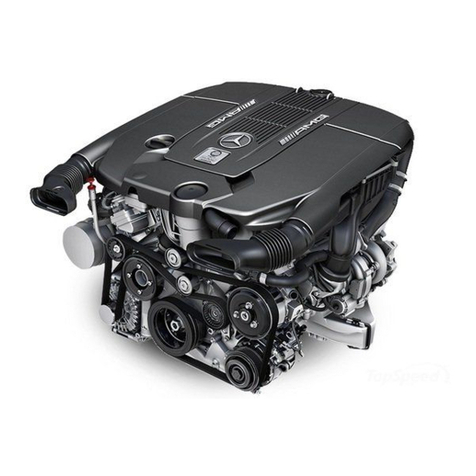
Mercedes-Benz
Mercedes-Benz V12 Biturbo M 279 AMG Introduction into service manual

LOMBARDINI MARINE
LOMBARDINI MARINE LMG 9000 MONOFASE Use and maintenance manual
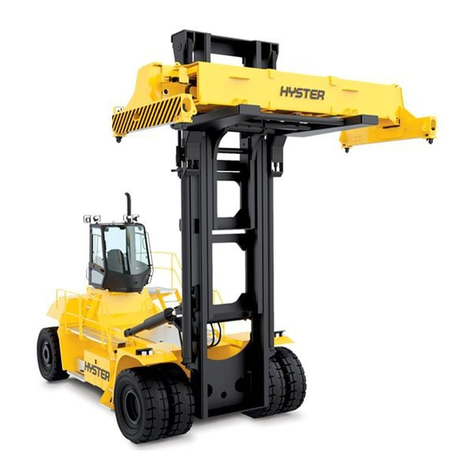
Hyster
Hyster G117 Service & repair manual

Volvo Penta
Volvo Penta 31 Series Workshop manual
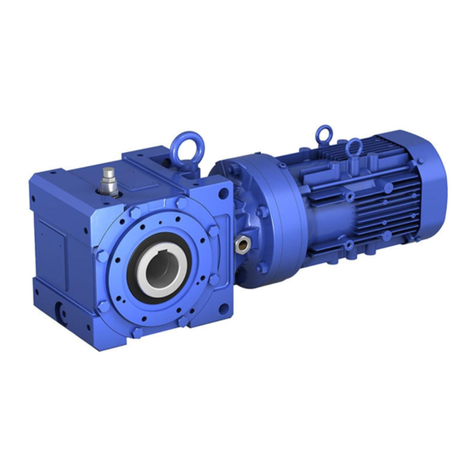
Sumitomo
Sumitomo Bevel BUDDYBOX 4 Series operating manual
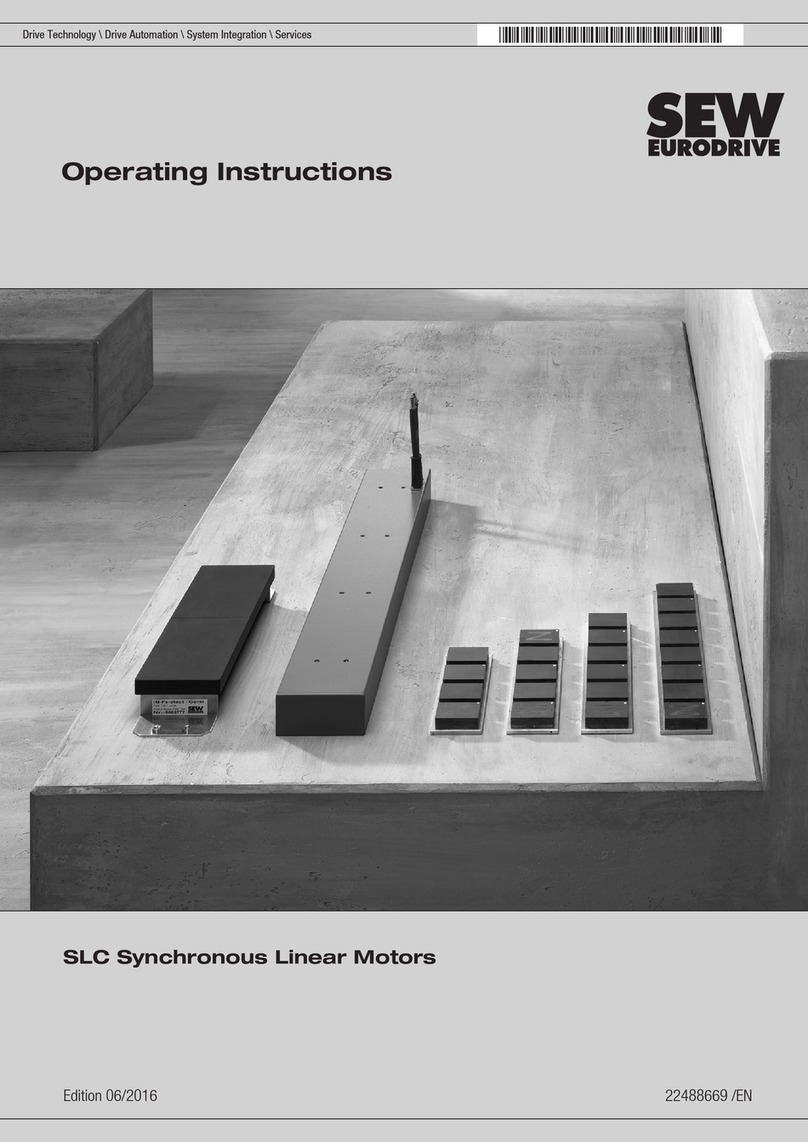
SEW-Eurodrive
SEW-Eurodrive SLC Series operating instructions
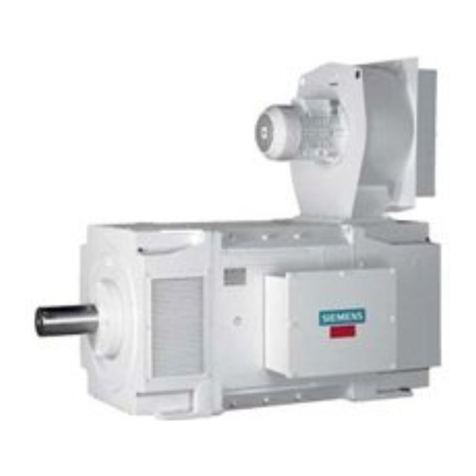
Siemens
Siemens SIMOTICS DC 1GH7 operating instructions
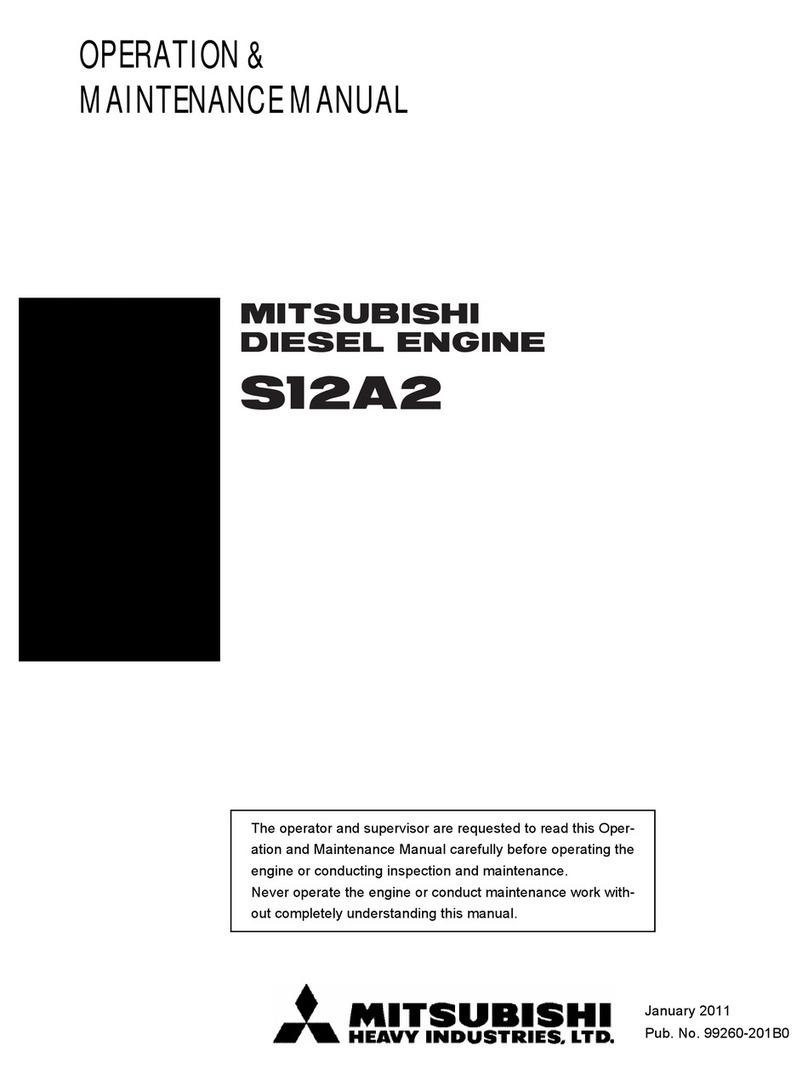
Mitsubishi Heavy Industries
Mitsubishi Heavy Industries SA Operation & maintenance manual

Briggs & Stratton
Briggs & Stratton 90000 series Operator's manual
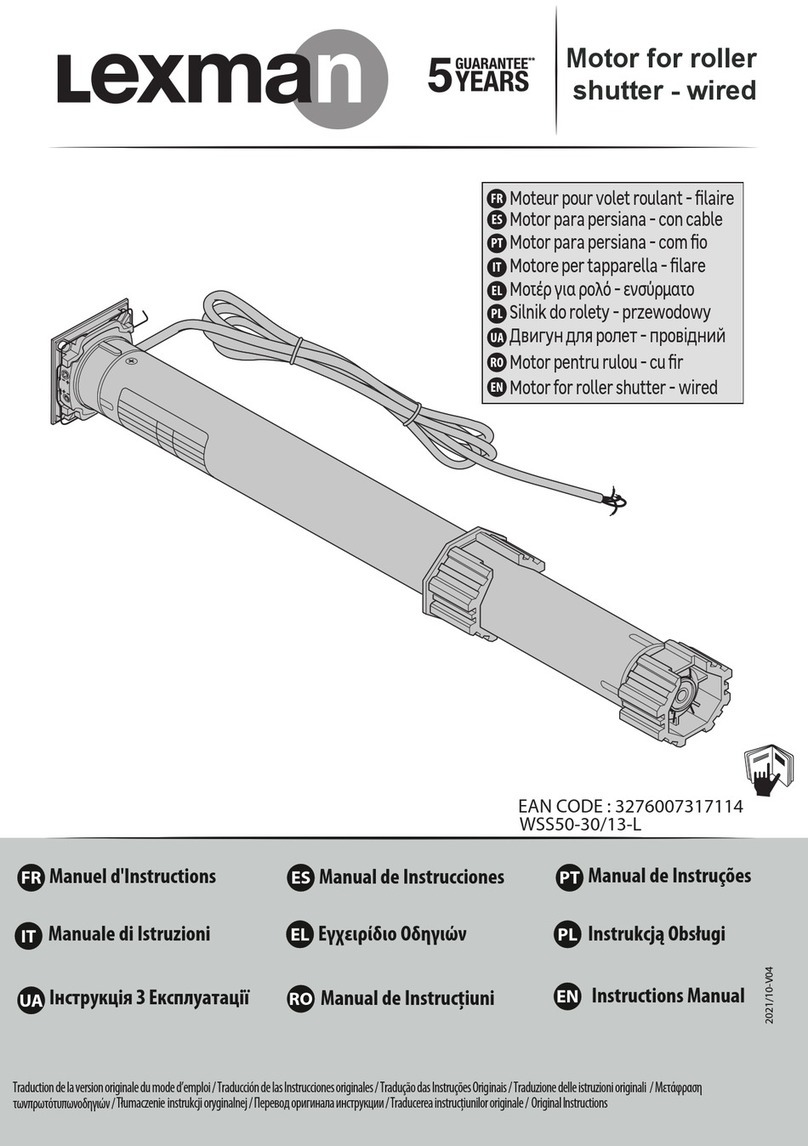
LEXMAN
LEXMAN WSS50-30/13-L instruction manual

Yanmar
Yanmar L48V Operation manual

ATIKA
ATIKA GHB 760 A Original instructions
